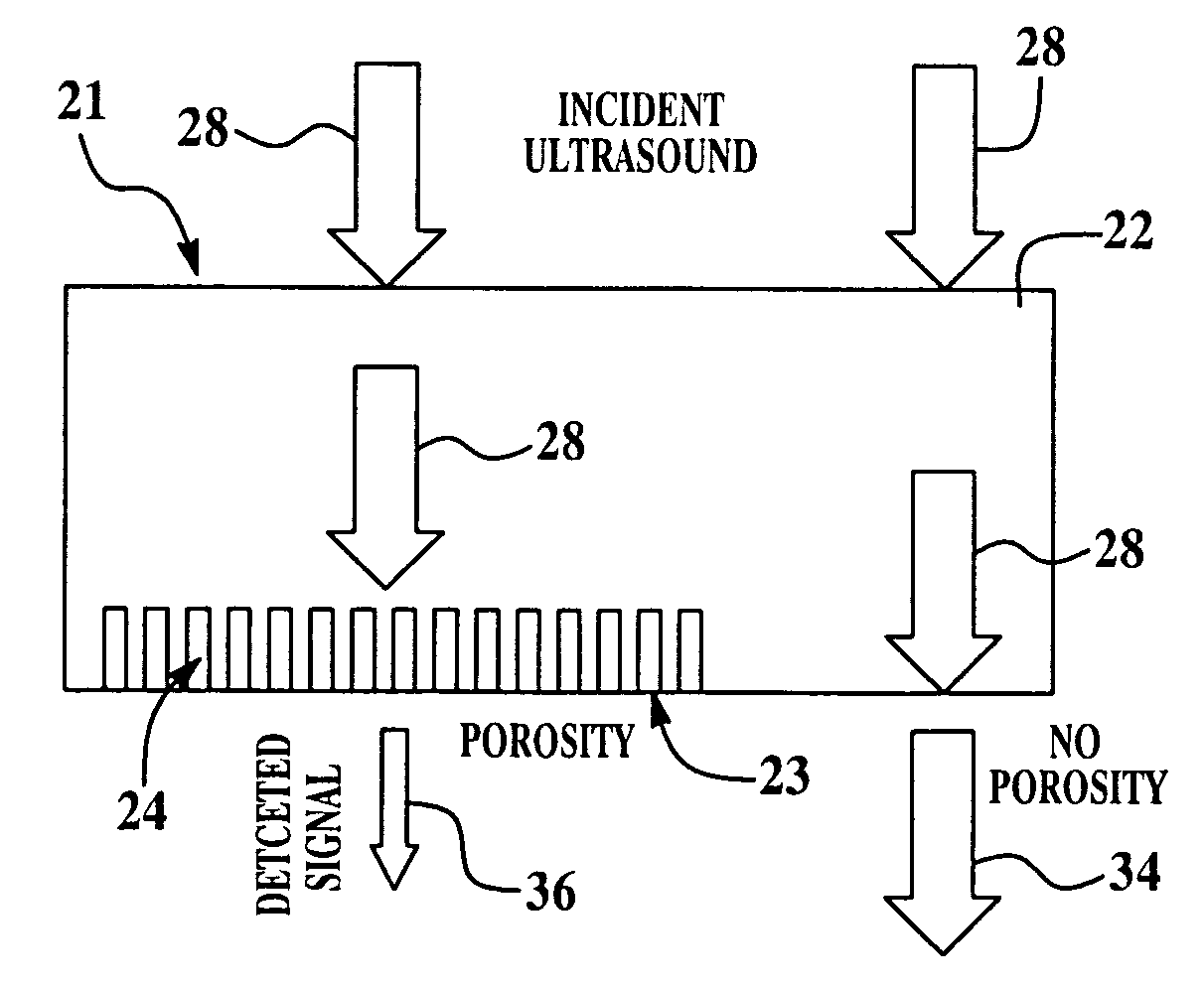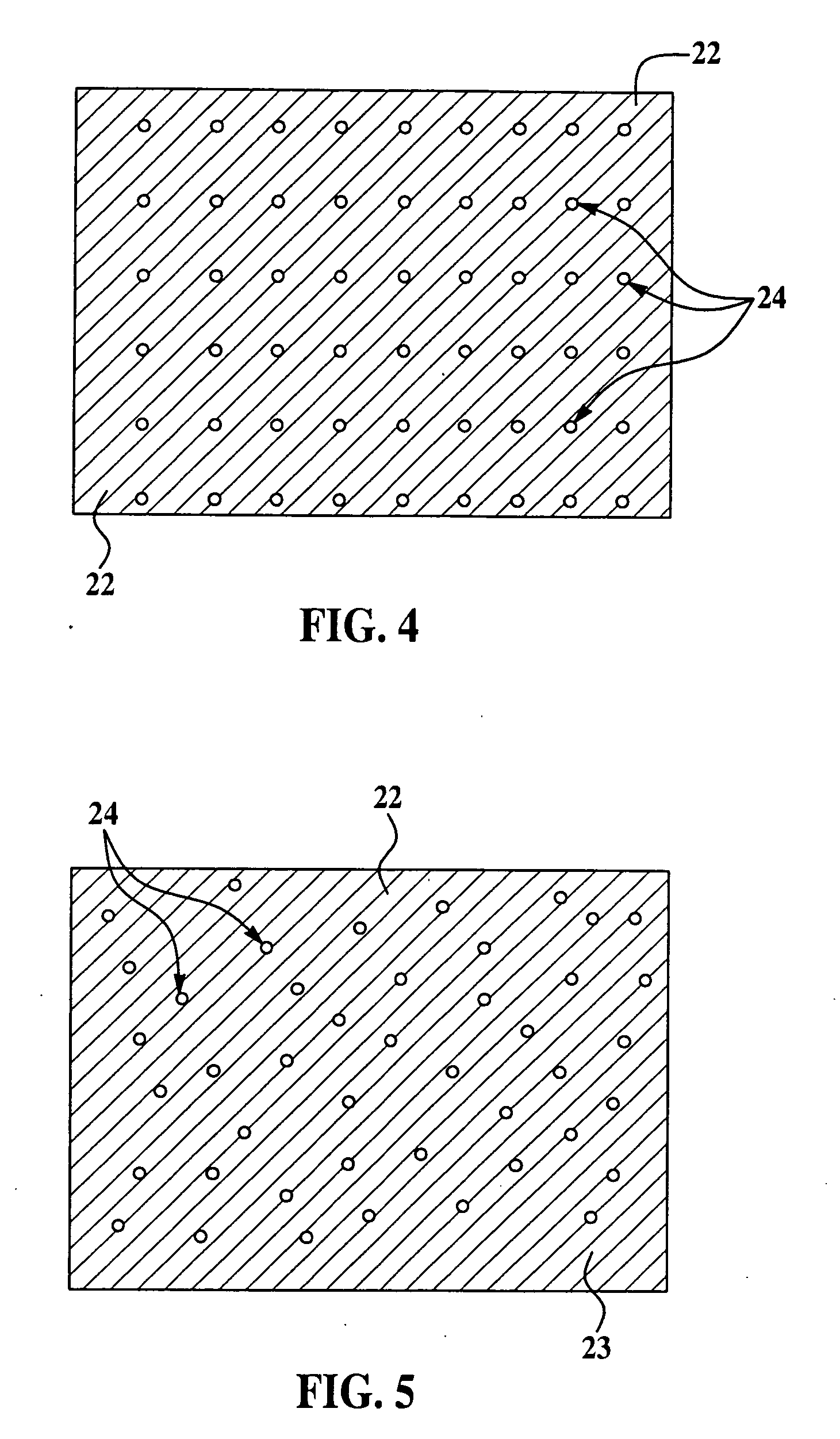Reference standard for ultrasonic measurement of porosity and related method
a porosity and ultrasonic measurement technology, applied in the direction of specific gravity measurement, static/dynamic balance measurement, instruments, etc., can solve the problems of reducing the structural strength of parts, not always uniform, time-consuming and expensive approaches, etc., and achieves low density porosity and high density
- Summary
- Abstract
- Description
- Claims
- Application Information
AI Technical Summary
Benefits of technology
Problems solved by technology
Method used
Image
Examples
Embodiment Construction
[0029]Referring first to FIGS. 1 and 2, the present invention relates to a reference standard 20 comprising a body 22 of suitable material that is used to calibrate equipment (not shown) for measuring the porosity of a part (not shown) using ultrasonic energy. The reference standard 20 can be used, for example, to perform pulse-echo ultrasonic inspection of composite patches and composite structures in general. The reference standard 20 simulates the ultrasonic pulse echo response to specific levels and depths of porosity. The standard 20 can be easily tailored and fabricated consistently and repeatably, at low cost.
[0030]The reference standard 20 may possess any of various shapes, but in the illustrated example comprises a rectangular shape having a uniform thickness throughout. The body 22 may comprise any of various materials that allow the transmission of ultrasonic energy. In one embodiment, the body 22 of the reference standard 20 may be formed from an acrylic material. In som...
PUM
| Property | Measurement | Unit |
|---|---|---|
| frequency | aaaaa | aaaaa |
| frequency | aaaaa | aaaaa |
| porosity | aaaaa | aaaaa |
Abstract
Description
Claims
Application Information
 Login to View More
Login to View More - R&D
- Intellectual Property
- Life Sciences
- Materials
- Tech Scout
- Unparalleled Data Quality
- Higher Quality Content
- 60% Fewer Hallucinations
Browse by: Latest US Patents, China's latest patents, Technical Efficacy Thesaurus, Application Domain, Technology Topic, Popular Technical Reports.
© 2025 PatSnap. All rights reserved.Legal|Privacy policy|Modern Slavery Act Transparency Statement|Sitemap|About US| Contact US: help@patsnap.com



